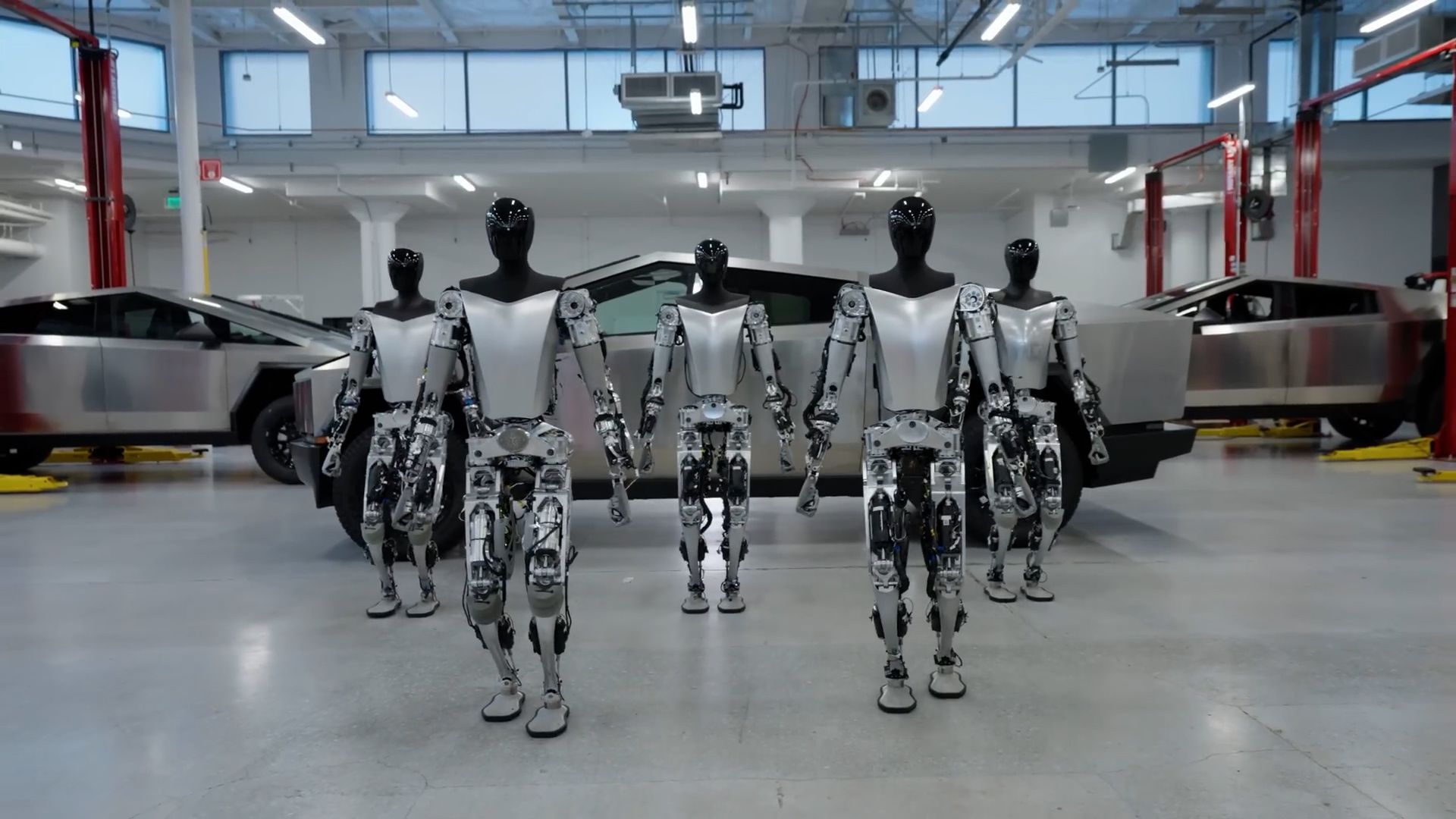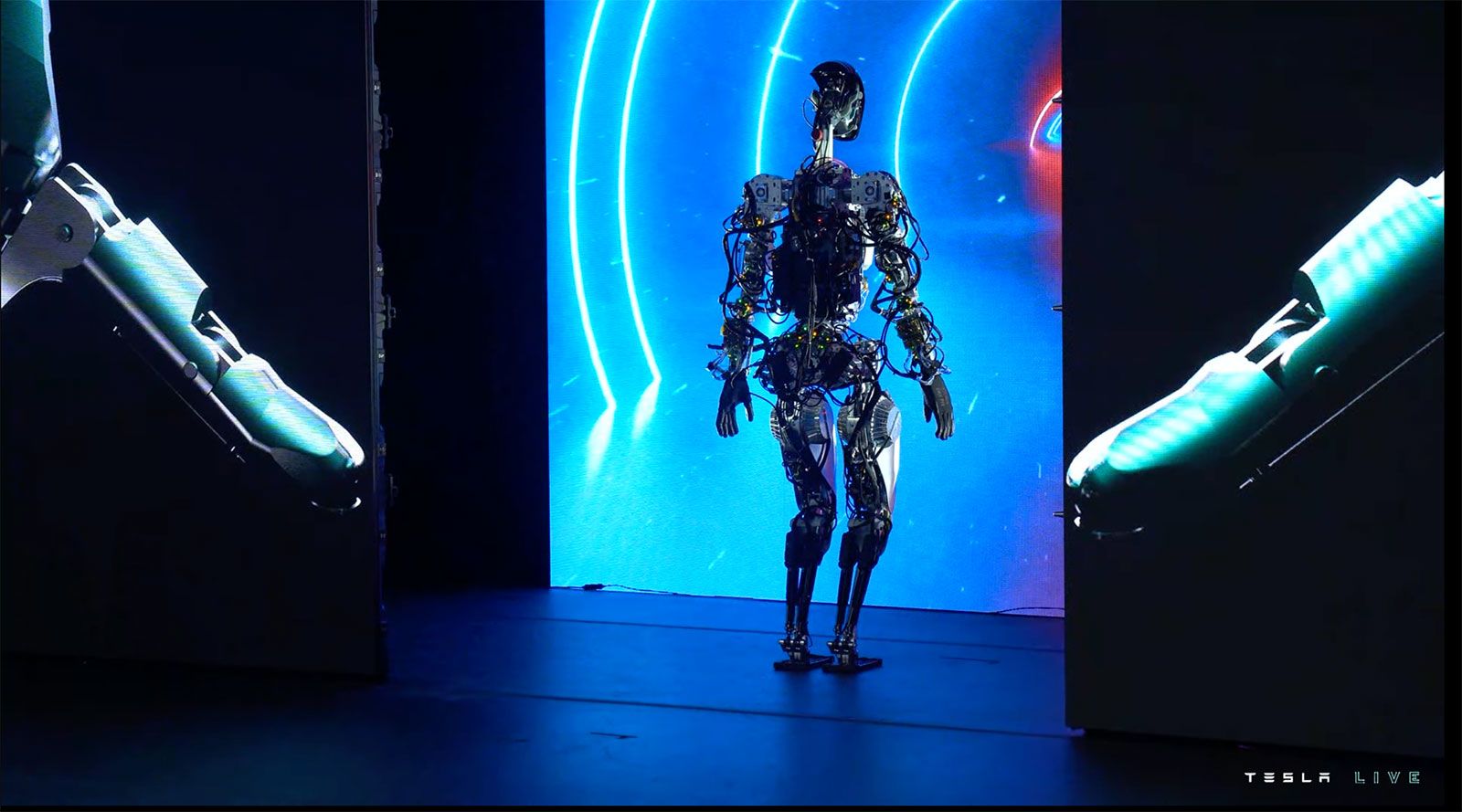Elon Musk has once again captured the world’s attention with the latest reveal of Tesla Bot 2.0 and Optimus Gen 3, marking a revolutionary leap in robotics and artificial intelligence. With promises of unprecedented capabilities, enhanced human-like movement, and real-world functionality, Tesla’s humanoid robots are no longer just futuristic concepts—they are rapidly becoming a reality.
At the much-anticipated event, Musk took the stage with his characteristic enthusiasm, introducing the next generation of Tesla’s AI-powered robots. The latest versions, Tesla Bot 2.0 and Optimus Gen 3, showcase a series of groundbreaking advancements that could reshape industries, redefine labor, and even revolutionize the way humans interact with machines.
Tesla’s first humanoid robot prototype, unveiled in 2021, sparked excitement but was still in its infancy. Many skeptics doubted its practicality beyond a simple tech demonstration.
However, with Tesla Bot 2.0 and Optimus Gen 3, Musk aims to silence the doubters by presenting real-world applications, enhanced dexterity, and seamless AI-powered decision-making.
According to Musk, these latest iterations of Tesla’s humanoid robots feature:
- Improved Human-Like Movement: Thanks to advanced actuators and neural networks, the robots now move more fluidly, mimicking natural human motions more precisely than ever before.
- Enhanced AI Learning: Optimus Gen 3 boasts real-time learning capabilities, allowing it to analyze environments, recognize objects, and adapt to various tasks with minimal programming.
- Better Balance and Agility: Tesla’s engineers have fine-tuned the robot’s ability to walk, run, and even climb stairs without losing stability.
- Hand Precision and Dexterity: The robots now possess near-human dexterity, enabling them to handle fragile objects, perform detailed tasks, and even assist in complex industries like manufacturing and healthcare.
- Wireless Updates and Self-Improvement: Similar to Tesla’s vehicles, the robots can receive software updates over the air, ensuring continuous improvements and expanding their capabilities over time.
Musk emphasized that these advancements put Tesla at the forefront of humanoid robotics, paving the way for large-scale adoption in homes, factories, and businesses.
One of the biggest questions surrounding Tesla’s humanoid robots is how they will integrate into everyday life and industry. Musk outlined several key areas where Tesla Bot 2.0 and Optimus Gen 3 could have an immediate impact:
- Manufacturing and Assembly Lines: Tesla Bots are designed to perform repetitive, physically demanding tasks that humans often find tedious or hazardous. This could dramatically improve efficiency while reducing workplace injuries.
- Home Assistance and Caregiving: From assisting the elderly with daily chores to providing companionship, these robots could redefine personal care.
- Logistics and Warehousing: Companies struggling with labor shortages could rely on Tesla Bots to handle inventory, move heavy objects, and optimize storage operations.
- Space Exploration: Given Musk’s ambitions with SpaceX, some experts believe these robots could be used for off-world missions, such as maintaining habitats on Mars or assisting astronauts in deep-space exploration.
While the idea of robots replacing human jobs is a growing concern, Musk reassured audiences that Tesla’s vision is not to eliminate employment but to shift human labor towards more creative and fulfilling roles.
At the heart of Tesla Bot 2.0 and Optimus Gen 3 is Tesla’s cutting-edge artificial intelligence. These robots are powered by Tesla’s Dojo supercomputer, which allows them to process vast amounts of real-world data and improve autonomously.
Musk highlighted that the AI used in these robots is designed to understand context, respond to natural speech, and even predict human needs. Unlike traditional industrial robots programmed for single tasks, Tesla’s humanoid machines continuously learn and evolve.
Tesla’s AI team has been training the robots using reinforcement learning—where the machines observe human behavior and gradually refine their skills. This means Tesla Bots won’t just follow pre-programmed commands; they will develop the ability to make independent decisions based on their environment.
Musk has never been shy about his futuristic ambitions. He envisions a world where humanoid robots handle the bulk of mundane tasks, freeing humans to pursue more meaningful and creative endeavors. In his words:
"Why should humans spend their lives doing repetitive, physically exhausting work when AI and robotics can do it for us?"
He suggested that, in the near future, every home could have a Tesla Bot assisting with everyday activities—cooking, cleaning, fetching groceries, and even teaching children.
Additionally, Musk hinted at the possibility of integrating Tesla Bots with Neuralink, his brain-computer interface company. While this remains speculative, the idea of human-to-robot neural communication could redefine human-machine interaction entirely.
As expected, reactions to Tesla’s latest robot reveal have been mixed. Supporters see it as a major leap forward in AI and robotics, predicting that Tesla Bots could be as transformative as the Model S or Tesla’s Full Self-Driving technology.
Critics, however, remain skeptical. Some argue that despite impressive advancements, humanoid robots still face significant hurdles, including cost, ethical concerns, and societal readiness. There are also lingering fears about AI surpassing human intelligence, a topic Musk himself has warned about in the past.
Nonetheless, Tesla’s unveiling of these next-gen robots signals that the future is arriving faster than many expected. Whether society is ready or not, Musk and his team are pushing ahead, determined to shape the world with AI-driven humanoid assistants.
With Tesla Bot 2.0 and Optimus Gen 3 officially revealed, Musk stated that mass production could begin sooner than anticipated. He hinted that within the next few years, Tesla Bots could be available for commercial and personal use, with prices gradually becoming more affordable.
As Tesla continues to refine its humanoid robots, the world watches with anticipation. Will these AI-powered assistants become as common as smartphones in the next decade? Or will they remain a niche technological marvel?
For now, one thing is certain: Tesla is leading the charge in the robotic revolution, and the future is closer than ever.




-1742974418-q80.webp)
-1742868399-q80.webp)
-1742367726-q80.webp)
-1742372918-q80.webp)